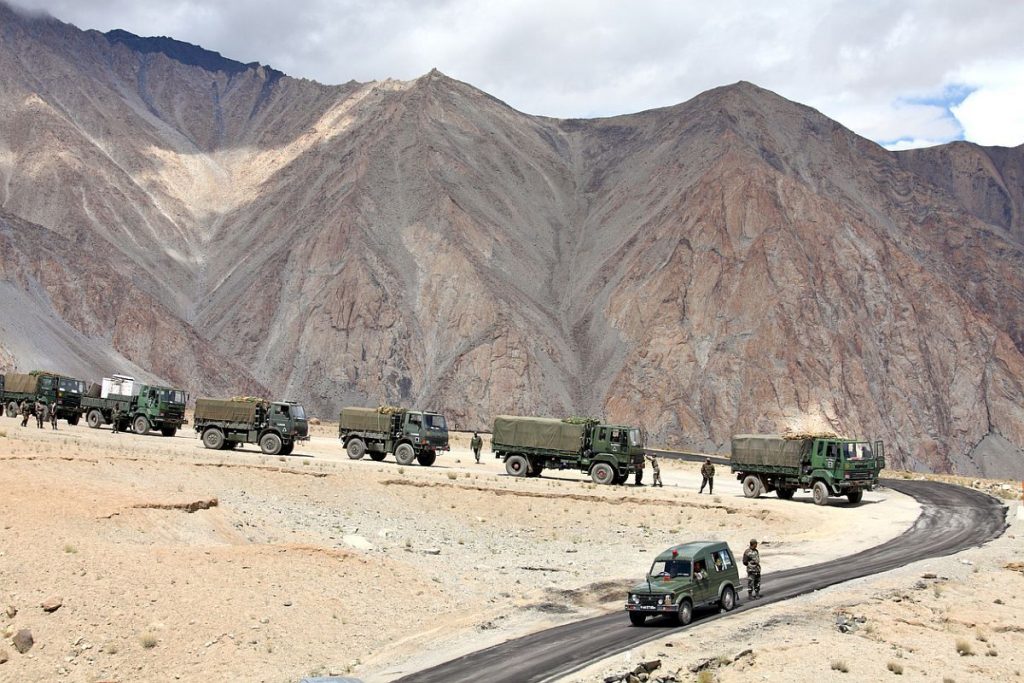China intrudes again: This time in Tawang, Arunachal Pradesh
——-Prof. Sudhir Singh, The University of Delhi
The clashes between Indian and Chinese troops in the Tawang sector on 09 December 2022 are no exception. It was one more skirmish in the series of clashes when Chinese troops intruded into the Yangtse area of the Tawang Sector in Arunachal Pradesh. When Indian Army soldiers asked the intruding Chinese soldiers in the Yangtse area on the Actual Line of Control (LAC) to stop, the Chinese men resorted to using sticks to push their way across the post. It led to clashes similar to the Galwan incident. Soldiers on both sides were injured, but the doggedness of the Chinese was evident. Since China claims Tibet, PLA intrudes with impunity, albeit in a different sector every time. There is a Hot Line between the Chinese PLA commander and the commander of the Indian Army forces at Tawang.

However, the Chinese resorted to a physical show of strength and attempted to claim the area instead of talking over the Hotline. The Chinese army violated the existing India-China peace and tranquillity treaty called Agreement on the Maintenance of Peace and Tranquillity along the Line of Actual Control in the India-China Border Areas, signed on 07 September 1993. Both sides had agreed to maintain peace as per the Five Principles of mutual respect for sovereignty and territorial integrity, mutual non-aggression, non-interference and equality, mutual benefit and peaceful co-existence. Chinese violated the agreement in the Galwan incident of 2020 and repeated the same in Arunachal Pradesh. Indian and Chinese troops have clashed at several points in the recent past. The initiative has always been by the Chinese Red Army. They identify an area of tactical importance and make a new military move that is offensive in intent and actions. Chinese troops move into Indian territory without prior warning, and the scene gets tense when Indian armed forces respond. Once the Chinese reach a position of advantage, they come to the negotiating table and blabber the same old excuse of ‘peace and tranquillity they are responsible for violating. Then the process of negotiation goes on without any outcome or visible commitment. These incidents may also be connected and viewed as deceptions plans of the Chinese intrusion plans of Taiwan. The Chinese plans of invading Taiwan had gathered dust, and maybe to thwart word attention, the Communist Regime has attempted to deviate the attention.
In the recent past, the Chinese premeditated tactics of surrounding Indian posts. Over 200-300 Chinese soldiers would surround an Indian Army border post on the LAC of about a section or a platoon of Indian soldiers. The overwhelming number of superiority was to pressure Indian soldiers to give in to the Chinese soldiers’ demand to cross the Indian posts to the South. They show their strength by taking photos of the Chinese soldiers with the Chinese flag as evidence of their perceived line of Chinese territory. But if asked to show the Chinese map, they stubbornly deny it. The diplomatic talks at the national level have proved futile. Words of peace and tranquillity prevail, with both sides requesting each other to maintain calm. Chinese have a unique way of saying, ‘India-China, the two old civilisations and are highly mature and will not get into conflict’. The exhibition of good neighbours’ relations and talks of the Red Army has always been positive and peaceful and they project themselves as champions of peace and harmony. But on the ground and the borders, the scene is very different. They are nowhere close to what the Polit Bureau or the Diplomats claim.
Incidents of skirmishes in the recent past depict an obvious trend line. They are not stray or independent incidents as claimed by them. They are well-planned strategic moves China is making to slowly and surely unnerve Indian polity and the military. China knows well that the Indian side will not take any offensive and will not initiate similar incursions into Tibet. Call it Indian weakness or the Chinese appreciation, and the Indian side has not shown any planned initiative against China since the shameful defeat of India in 1962. VS Subramanian, a senior author, has analysed and stated that these are not random actions by the Chinese; instead, they are well-orchestrated offensive actions focused in Aksai Chin and Arunachal Regions. News Northwestern calls Chinese actions an Expansionist strategy. China has been foraging into the areas where there are existing border disputes. Research shows in the fifteen periods between 2005 to 2020, there have been 13 skirmishes and hotspot areas where the Chinese have intruded. The average rate of incursions has been 7.8 incursions per year. The Indian government has quoted the figures at 300 incidents per year.
The follow-up actions of the Flag meeting between the two sides attempt to salvage the situation. The two opposing commanders of the PLA and Indian Army met at the Bumla post to defuse the situation. The Chinese side is represented by a Senior Colonel of the PLA (equivalent to a Brigadier of the Indian army). The Flag meeting is a highly formal affair where both sides posit their stance and offer to maintain peace in future.
The worldview is more from individual countries’ perspectives of diplomacy, trade and the influence of superpowers. China plays hegemony in its sphere of influence and flexes muscles against India at United Nations and other international fora. Will the briefing of Mr Rajnath Singh in parliament on 13 December 2022 melt the ice? Will China continue to intrude with the same impunity? When will India apply a similar counter-intruding strategy against China?
Let India write the history of the future in the true Indian ethos.



